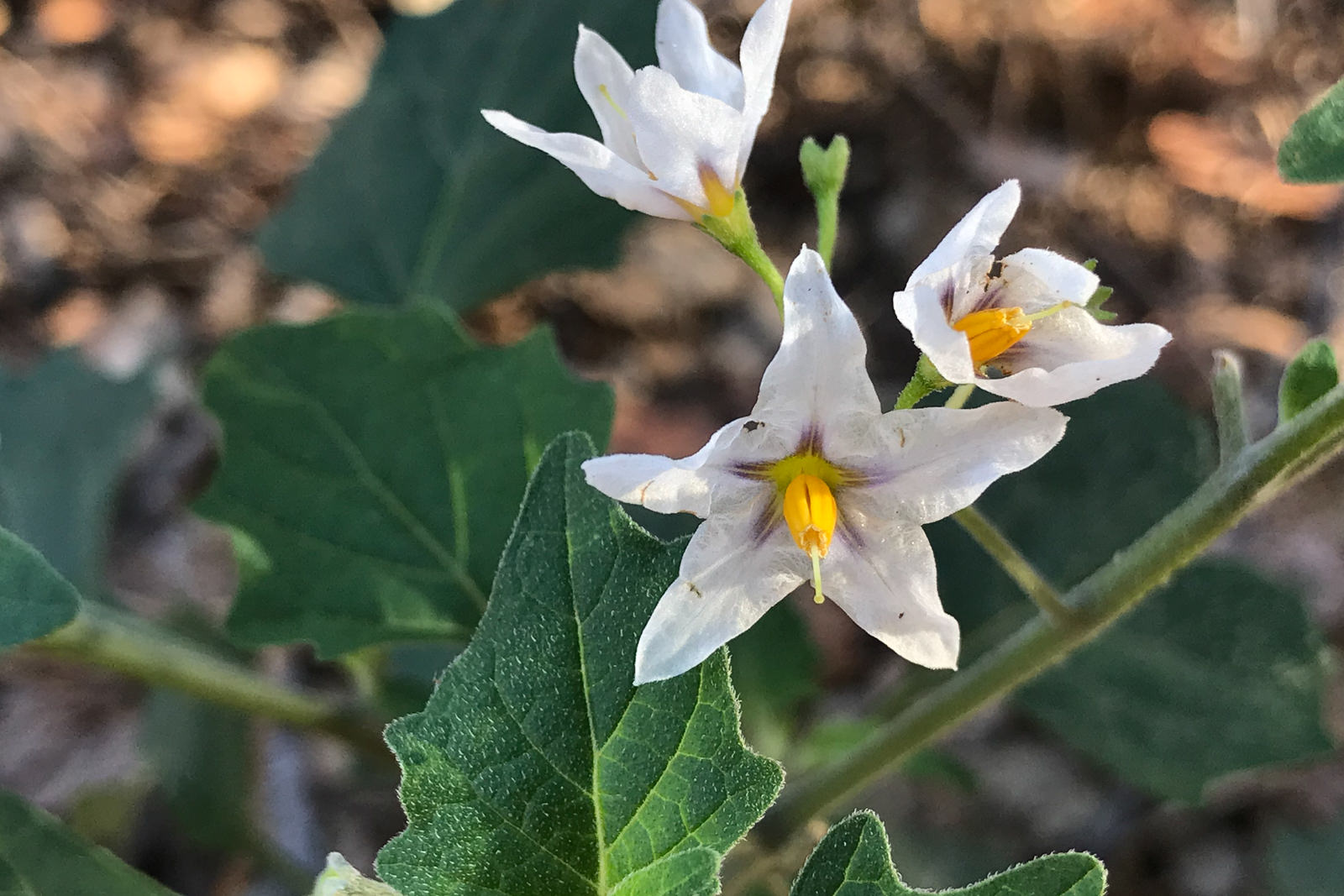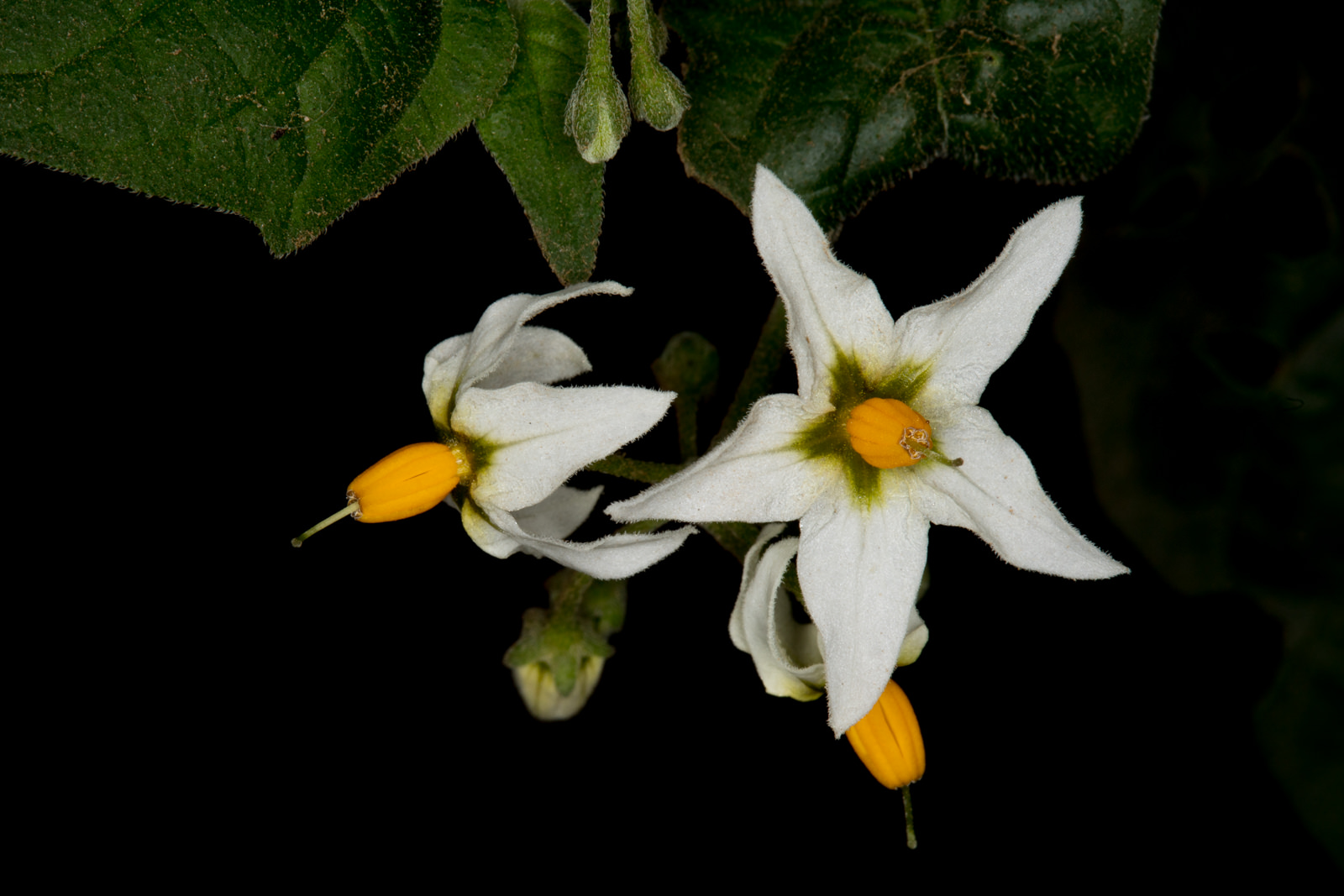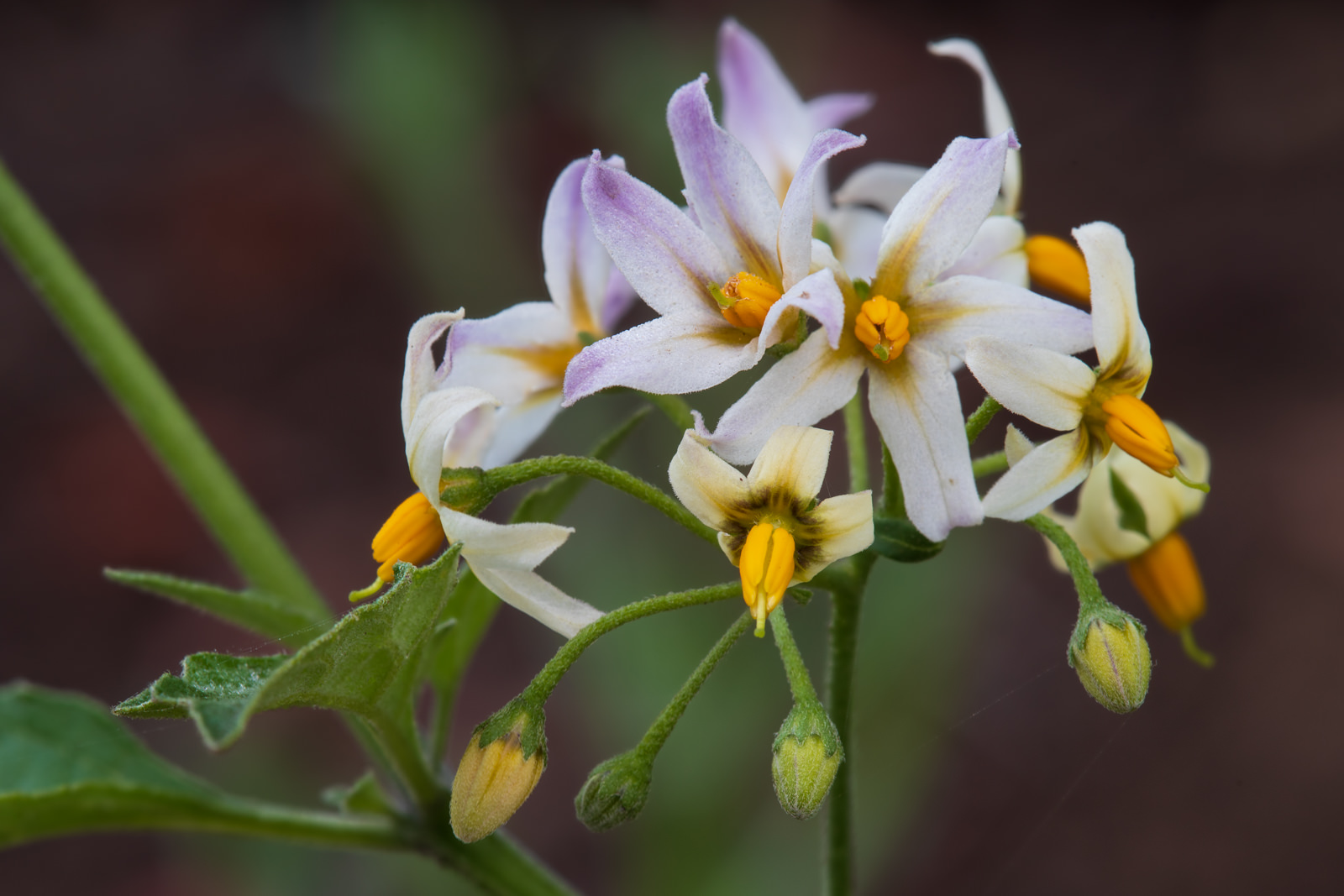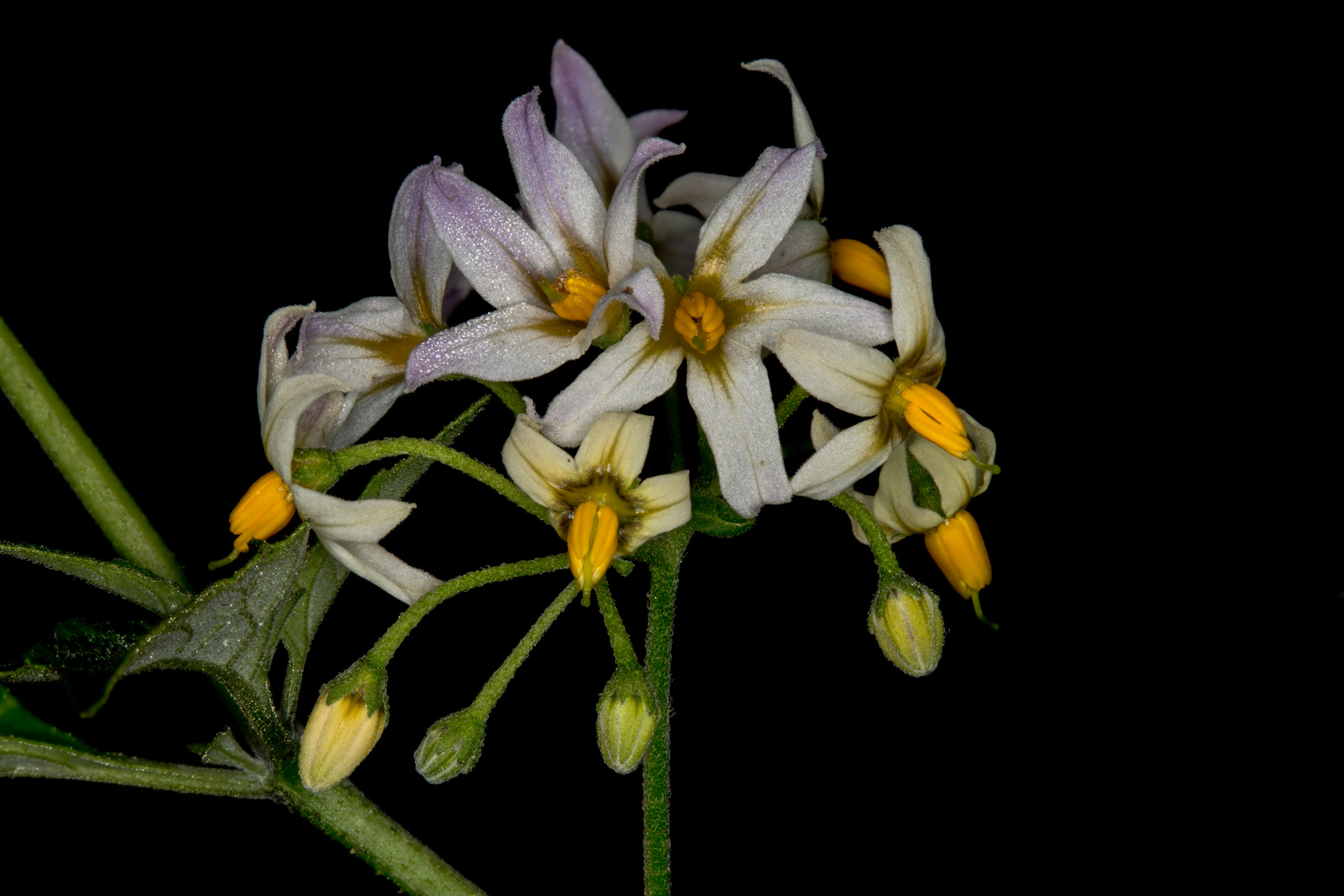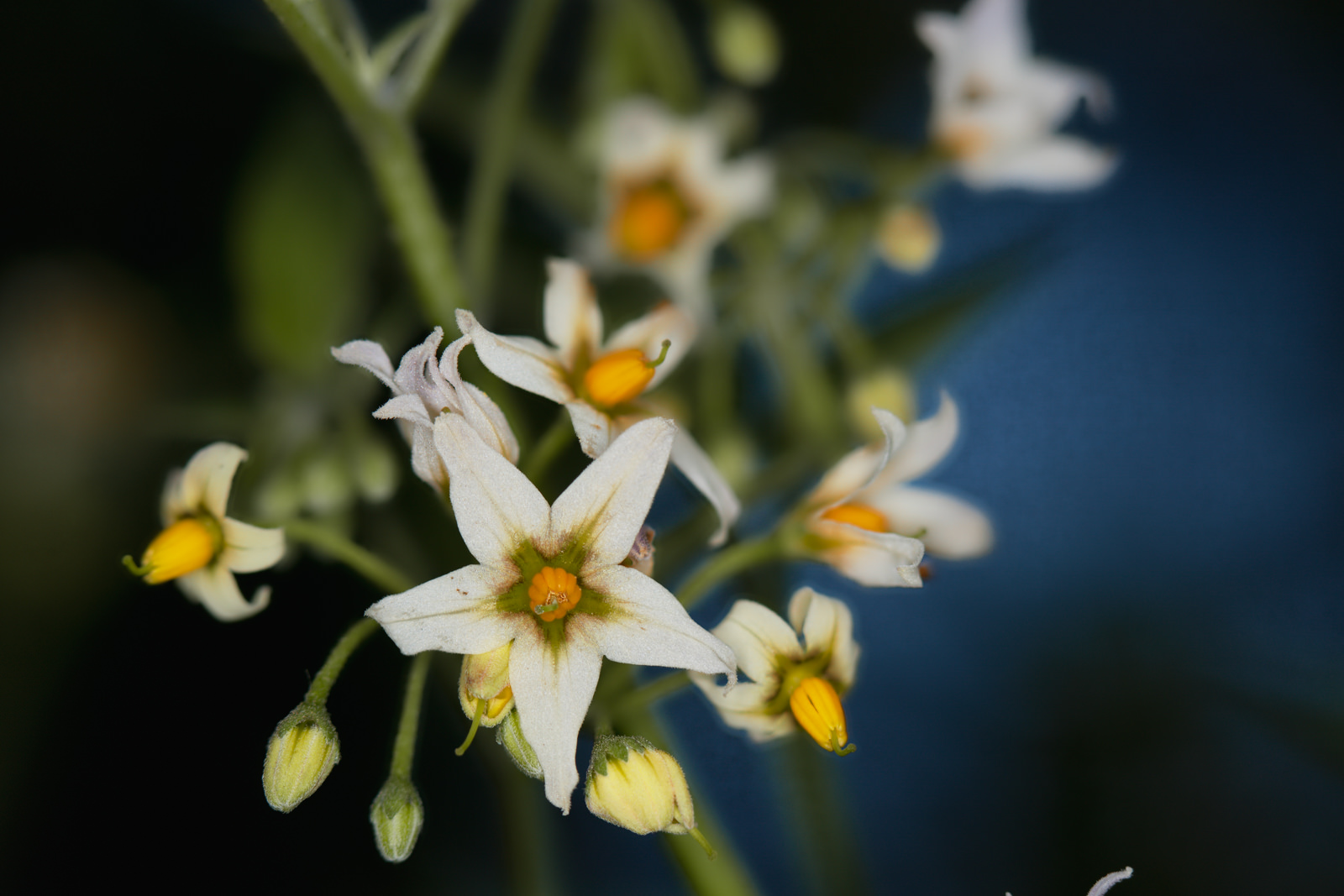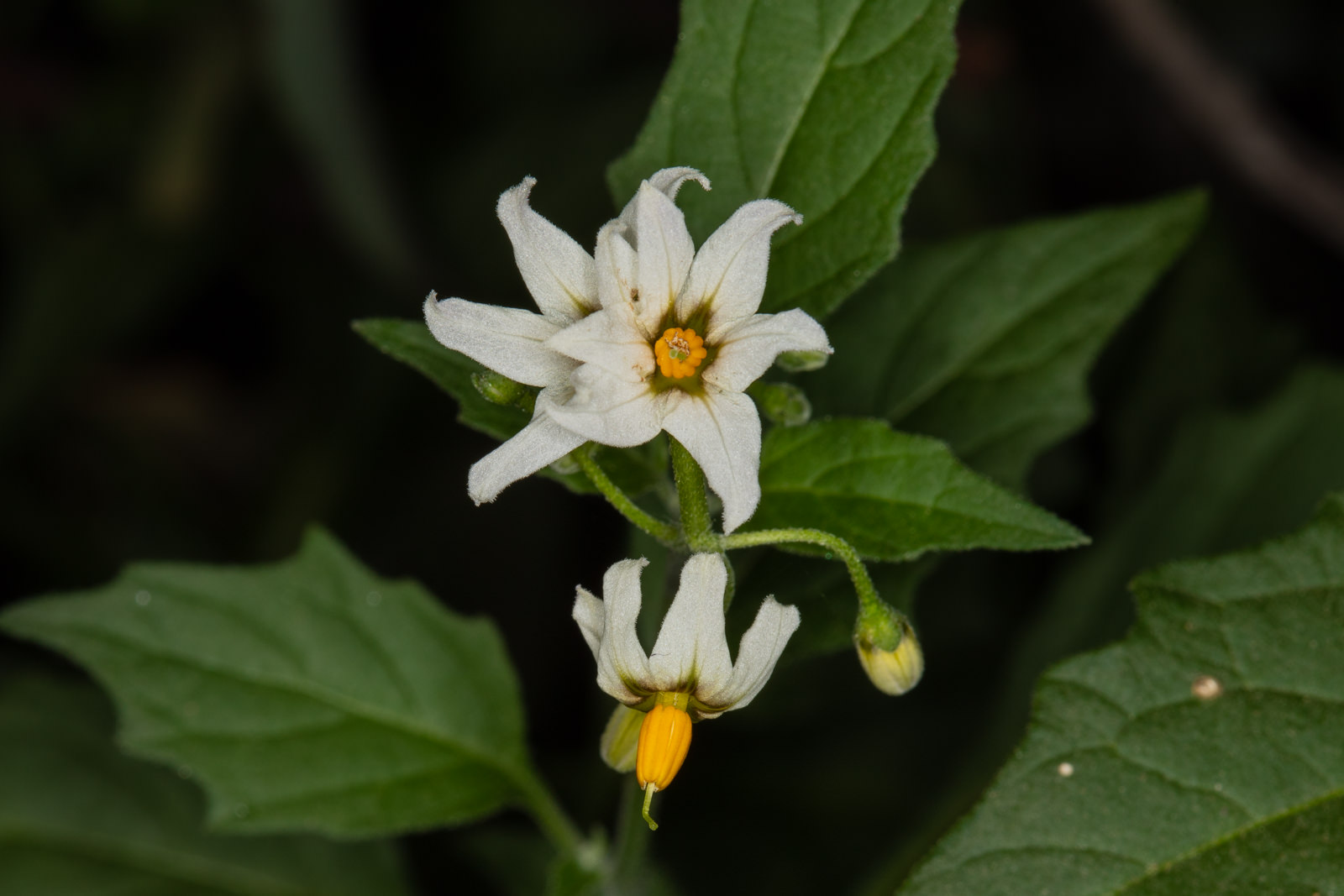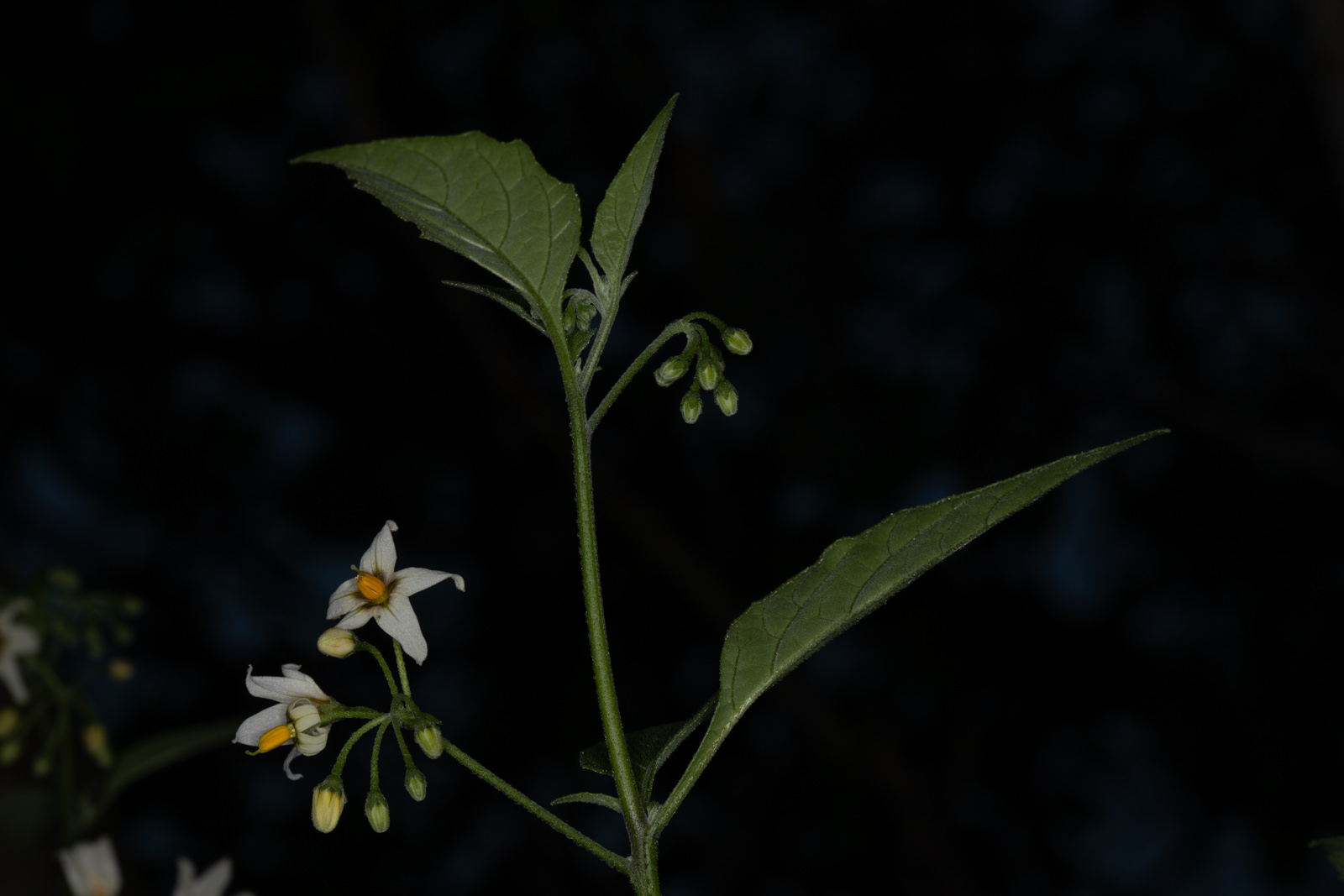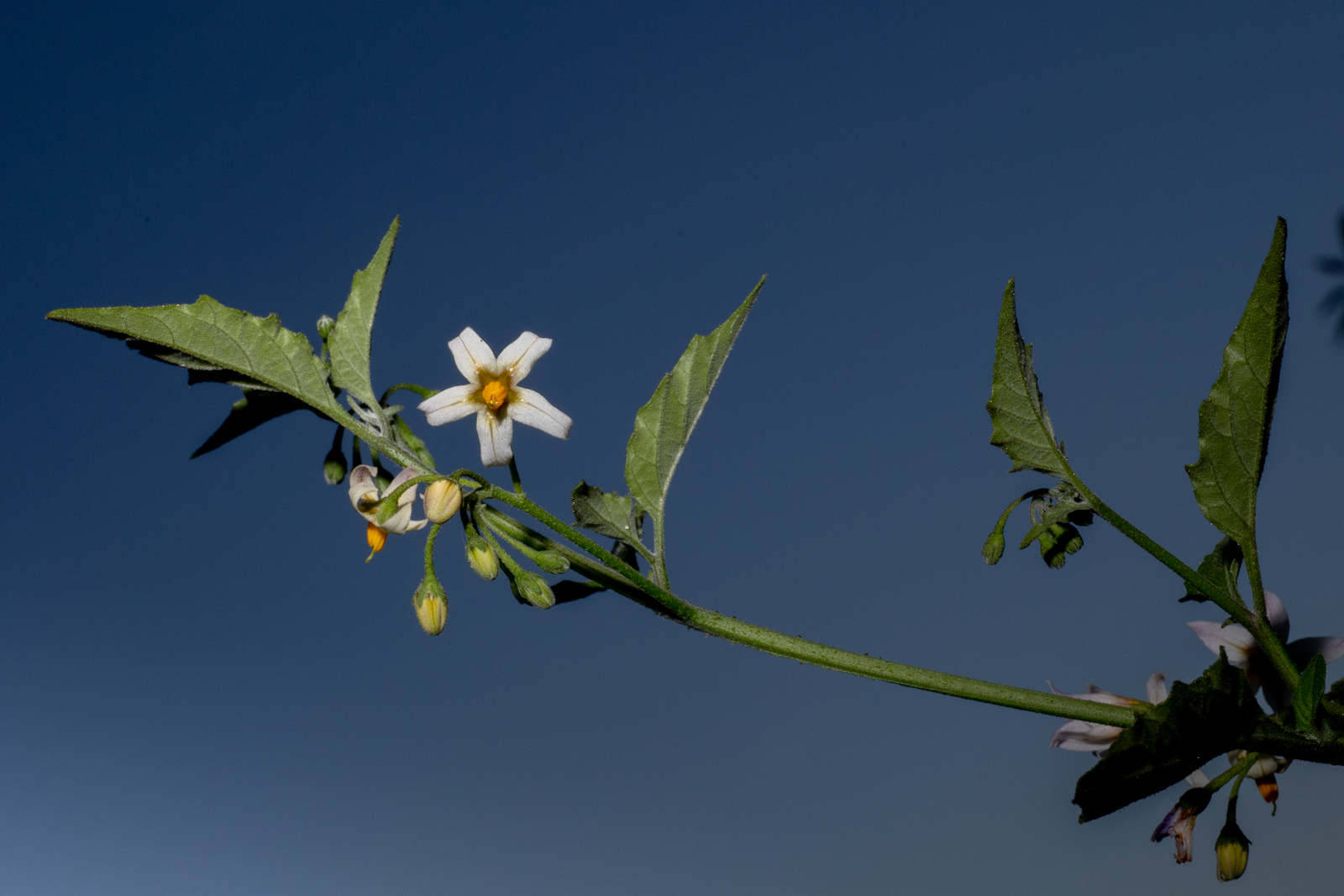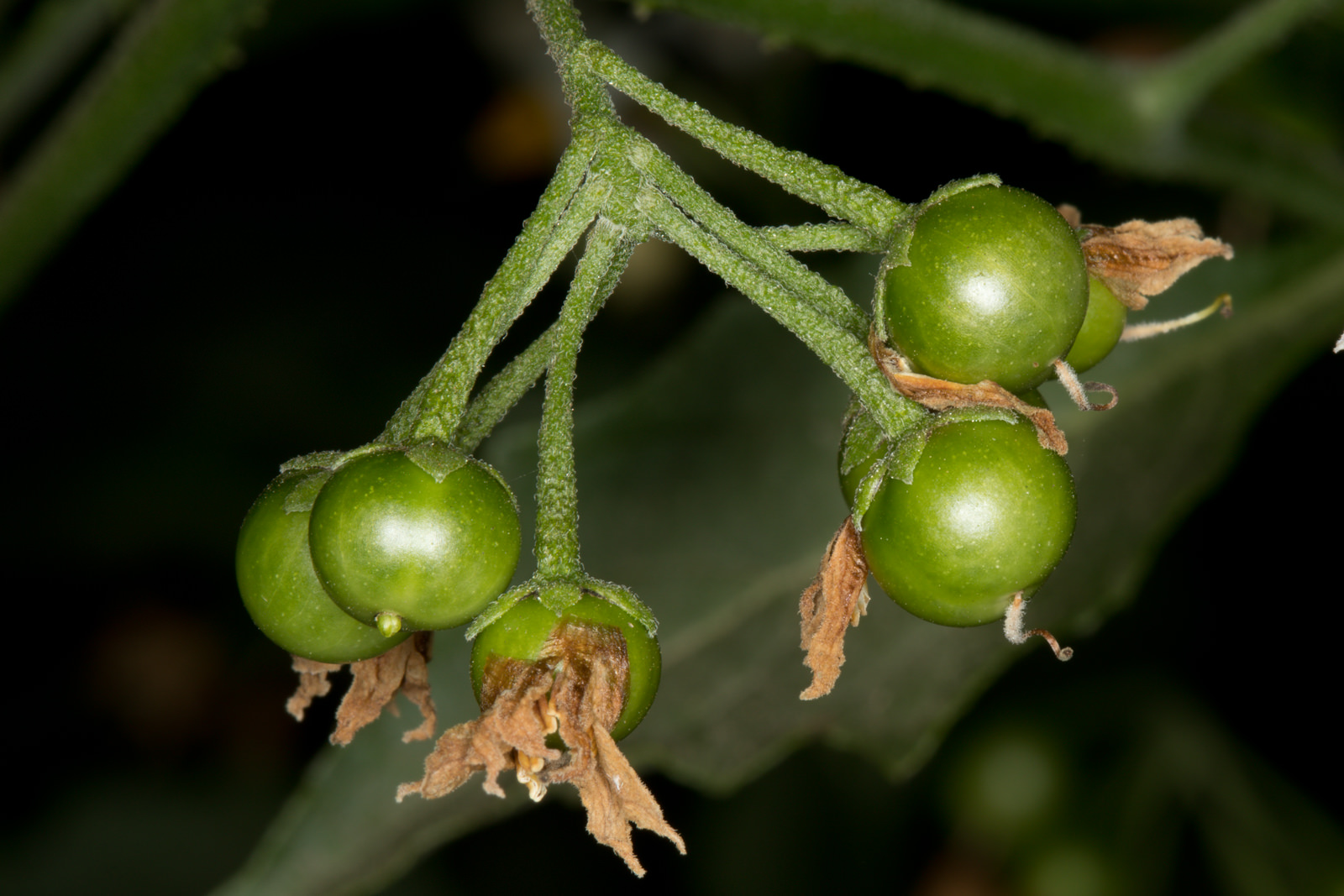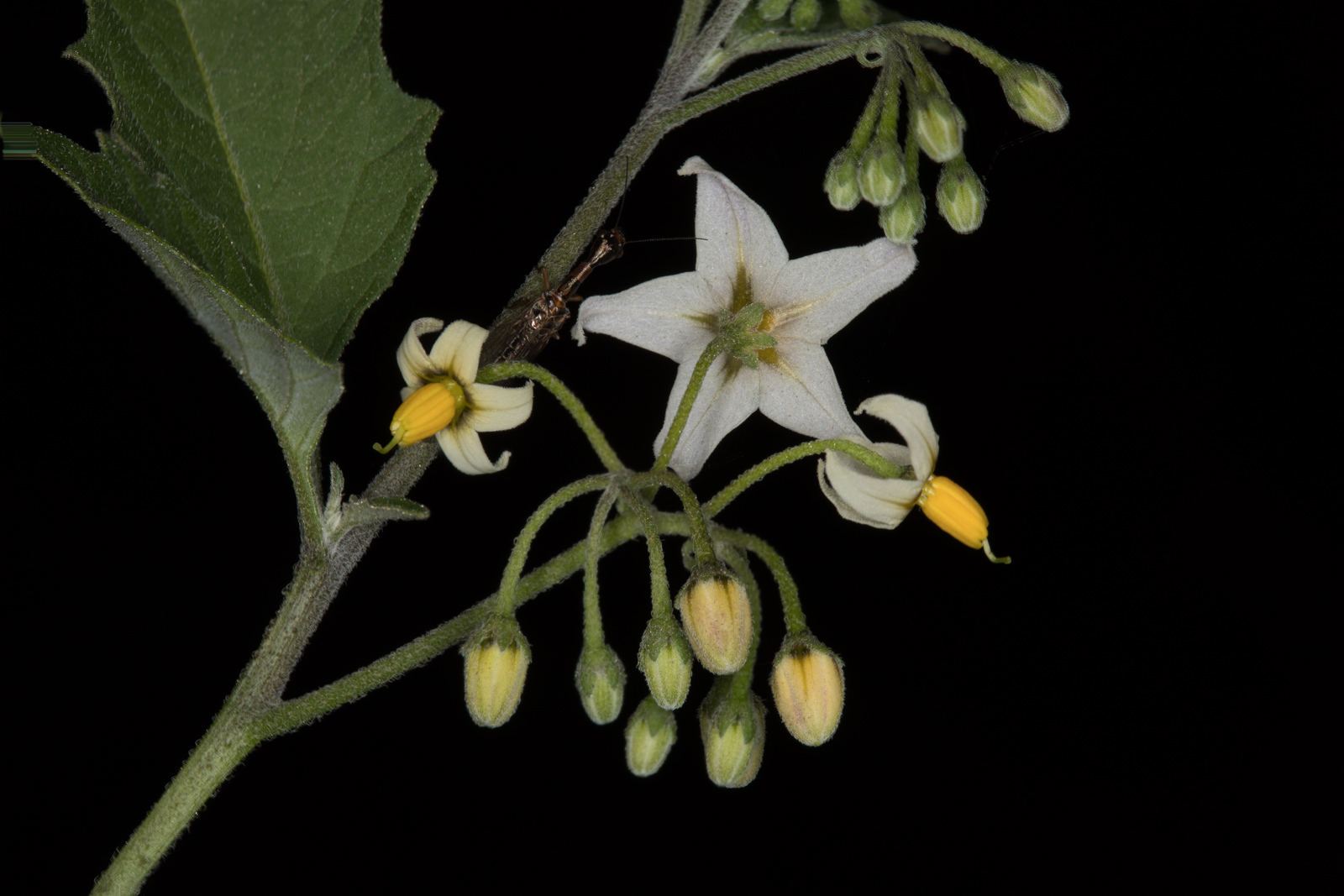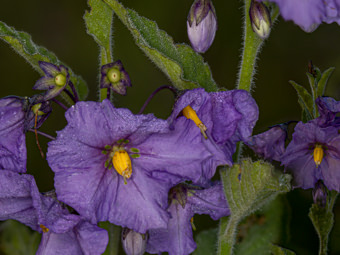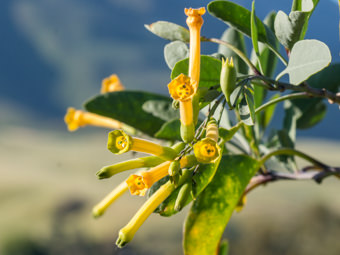Douglas Nightshade
- Solanum douglasii
| Common Name(s): | Douglas Nightshade |
| Scientific Name: | Solanum douglasii |
| Family: | Solanaceae (Nightshade) |
| Plant Type: | Perennial |
| Size: | up to 6 feet |
| Habitat: | Shady hillsides, canyons, coastal scrubland |
| Blooms: | February to October |
| Fire Response: | Germinate from Seed |
Douglas Nightshade or greenspot nightshade - Solanum douglasii is a perennial shrub found on hillsides and canyons. At first glance you might have thought this was a Purple Nightshade (Solanum xanti) with white flowers. If you looked carefully enough you would see that Douglas Nightshade has flowers in the shape of a star rather than a flower with fused petals. This shrub is not as common as Purple Nightshade in the Santa Monica Mountains. Several foods that we eat are related to this plant: potato (S. tuberosum) and eggplant (S. melongena). The tomato (Lycopersicon esculentum) is also in the Nightshade family, but in a different genus. The fruits look similar to eggplants - only a lot smaller.
The flower contains green spots at the base of the five corolla lobes, which are white to light purple in color, pointed, and bent far back when fully mature. There is a fused cylinder of yellow stigmas, with a style protruding out of the center. Fruits are initially green, becoming black as they mature.
Stems branch freely, producing clumps up to six feet high and wide; they, and the leaves, have a covering of short, white hairs. Flowers are produced as small, umbel-like clusters.
Link to Calflora.net - the best source of this fascinating information
Name Origin:Solanum: is derived from the Latin solanem, “soothing”, because of the narcotic effect of some plants in this family; douglasii honors David Douglas (1798-1834), a Scottish botanist who collected many plants on the West Coast in the early 19th century.
Contributed by George Sherman
Featured Plants in the Solanaceae (Nightshade) Family:
Last modified: August 21 2024 15:18:58.
Number of Images: 11
Image Size Total: 3,740,328
References:
Wildflowers of the Santa Monica Mountains, by Milt McAuleyFlowering Plants: The Santa Monica Mountains, Coastal and Chaparral Regions of Southern California, by Nancy Dale
Chumash Ethnobotany: Plant Knowledge Among the Chumash People, by Jan Timbrook
Leaf Shapes Primer - Botanical Terms for Leaves: - Link

